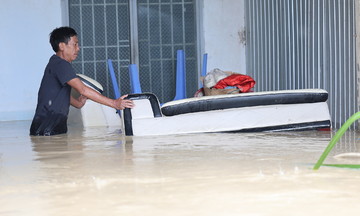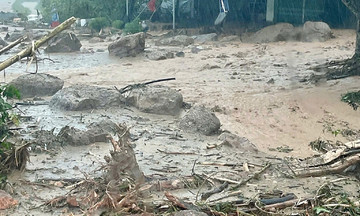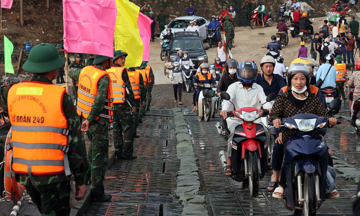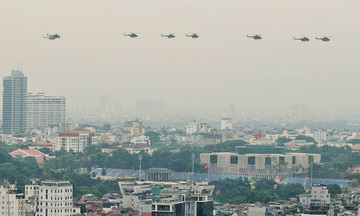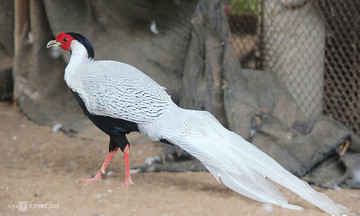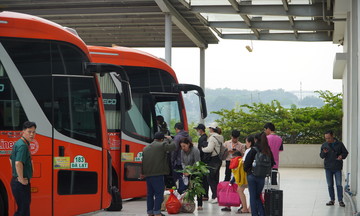At a forum on transitioning from gasoline to electric vehicles held on 21/7 and organized by Tien Phong newspaper, Nguyen Hoang Anh, acting head of the Environmental Quality Management Department at the Department of Environment (Ministry of Agriculture and Rural Development), reported that in the last three months of 2024, Hanoi experienced 47 days of severely poor air quality, with the AQI reaching a peak of 246 on some days.
Hanoi has identified five sources of air pollution, with traffic activities accounting for 60%. However, Anh clarified that the Ministry of Agriculture and Rural Development estimates that emissions from vehicles contribute about 12% to Hanoi's air pollution, while dust from traffic activities contributes 23%.
"A significant source of dust, about 29%, comes from industrial activities, while construction contributes 17-18% and burning activities (straw, tires) account for 15-16%. This data has been carefully measured from multiple sources and included in the Ministry's comprehensive report to the Prime Minister," Anh said.
 |
Nguyen Hoang Anh speaking at the forum on 21/7. Photo: T.P. |
According to the Department of Environment representative, the fundamental cause of air pollution is vehicle emissions combined with climate and weather conditions. Peak pollution levels in Hanoi are often significantly higher than in Ho Chi Minh City due to the combined effect of weather conditions. Previously, pollution typically fluctuated between 6-8 a.m. However, recently, pollution mostly occurs between 9 a.m. and 12 p.m.
"In our assessment, traffic activities combined with weather are the primary cause of pollution," Anh stated.
On the prime minister's directive to ban fossil fuel-powered vehicles in Hanoi, issued on 12/7, starting with motorcycles within Ring Road 1 by 1/7/2026, Anh highlighted the urgency of the situation. The ban will extend to personal cars within Ring Roads 1 and 2 by 1/1/2028, and within Ring Road 3 by 2030.
Regarding pollution sources, a World Bank study titled "Clean Air for Hanoi," published in 2023, indicated that one-third of PM 2.5 dust (the main component of air pollution) originates in Hanoi, while the rest is transported from outside areas.
Transportation contributes to about 25% of PM 2.5 pollution; nearly 35% originates from industrial activities, including power plants and large industries as well as craft villages; 10% from residential areas, mainly from biomass burning for cooking; 20% from ammonia sources in livestock and fertilizer; and about 7% from outdoor burning of agricultural byproducts.
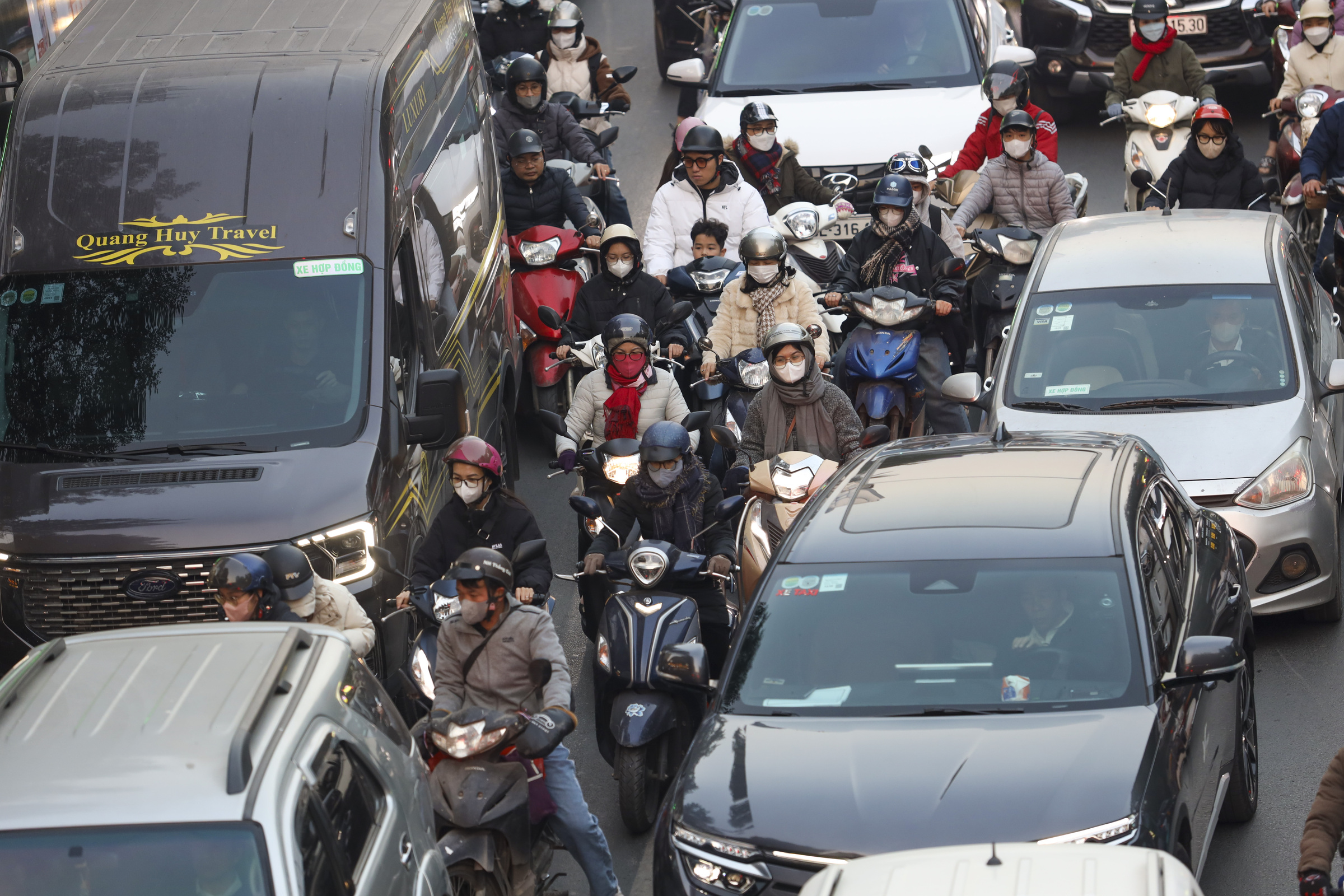 |
Motorcycles navigating through cars in Hanoi. Photo: Pham Chieu |
At the forum, citing research from the University of Natural Sciences and British experts, Associate Professor Dr. Hoang Anh Le, Head of the Environmental Management Department, Faculty of Environment, explained that vehicle-caused air pollution in Hanoi shows a clear distinction based on time and vehicle type. During the day, motorcycles are the primary source of emissions, while at night, heavy trucks dominate. These emissions fluctuate seasonally.
According to Le, motorcycles, the most common vehicle, consume a lot of energy and emit directly through exhaust pipes without any emission treatment system, leading to higher pollution levels compared to cars. "Besides the vehicle factor, the low travel speed in Hanoi also increases emissions. Calculations show the average vehicle speed is only about 35 km/h, which makes vehicles consume more fuel and emit more pollutants," Le added.
Phan Truong Thanh, Head of the Finance and Investment Department of Hanoi's Department of Construction, reported that Hanoi currently has an estimated 6.9 million motorcycles, with about 95% using gasoline. Implementing the electric vehicle transition roadmap within Ring Road 1 will affect nine wards, six of which are entirely within the ring road. A preliminary survey within Ring Road 1 shows a stable population of about 600,000 and approximately 450,000 motorcycles, excluding vehicles entering from outside.
Thanh shared that the city's urgent task is conducting surveys and investigations to gather input data, which has been assigned to commune-level authorities. After obtaining this data, Hanoi will finalize policies and regulations related to the low-emission zone plan previously proposed.
"The city is also completing the infrastructure for general transportation and public transport. This is a core element. Hanoi does not recommend that people continue using motorcycles," Thanh said.
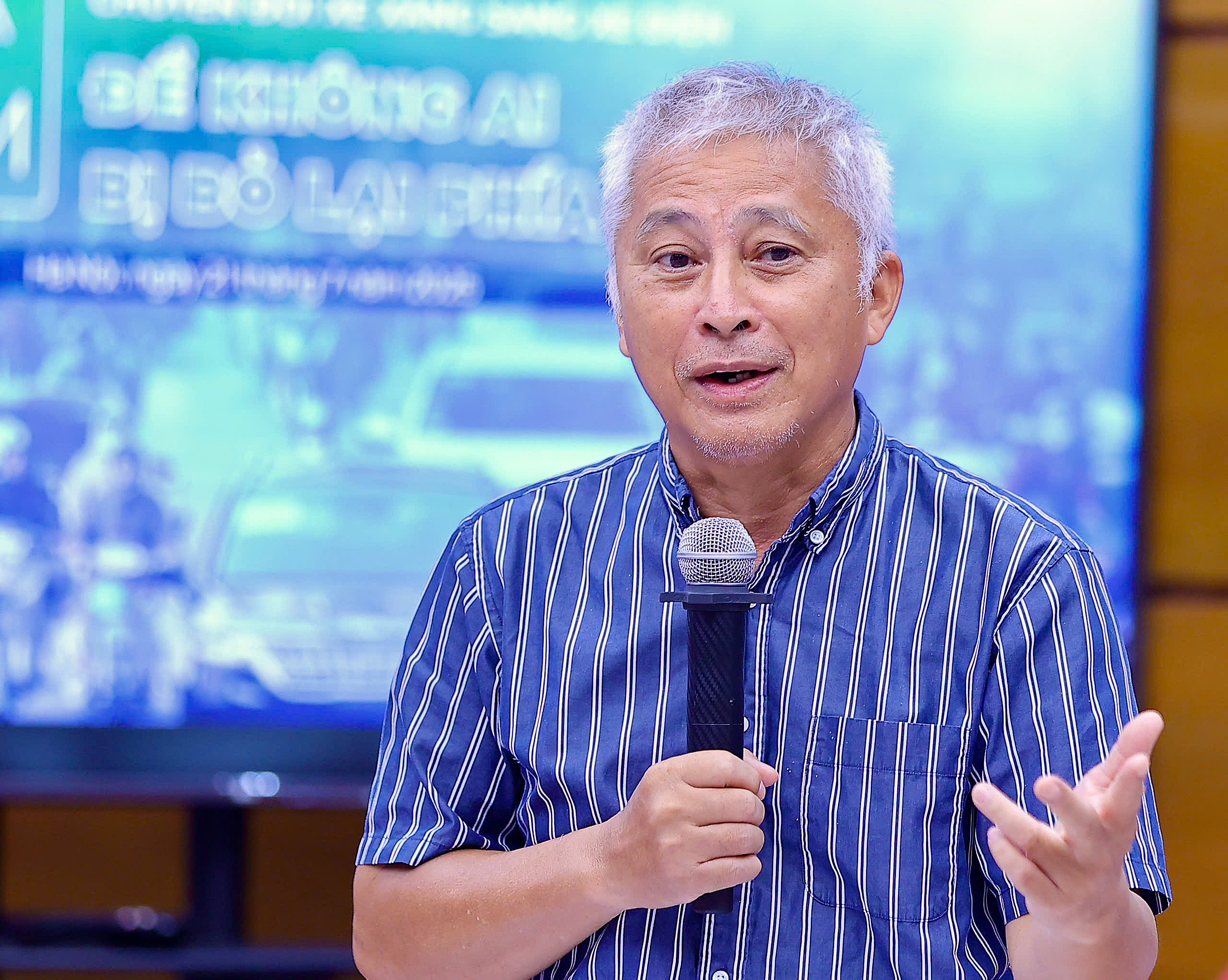 |
Dr. Hoang Duong Tung speaking at the forum. Photo: T.P. |
Dr. Hoang Duong Tung, President of the Vietnam Clean Air Network, believes that while transitioning from gasoline to electric vehicles in Hanoi faces difficulties, there are also many opportunities. "People need detailed announcements about Hanoi's transition policy. They need to understand that the transition is not overly difficult but will bring many advantages and smart utilities to their lives. This will demonstrate determination," he said.
Gia Chinh



